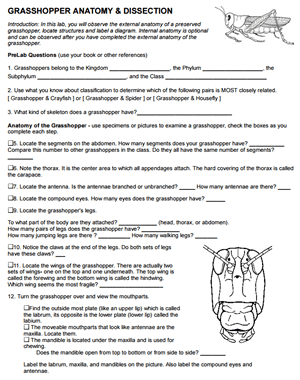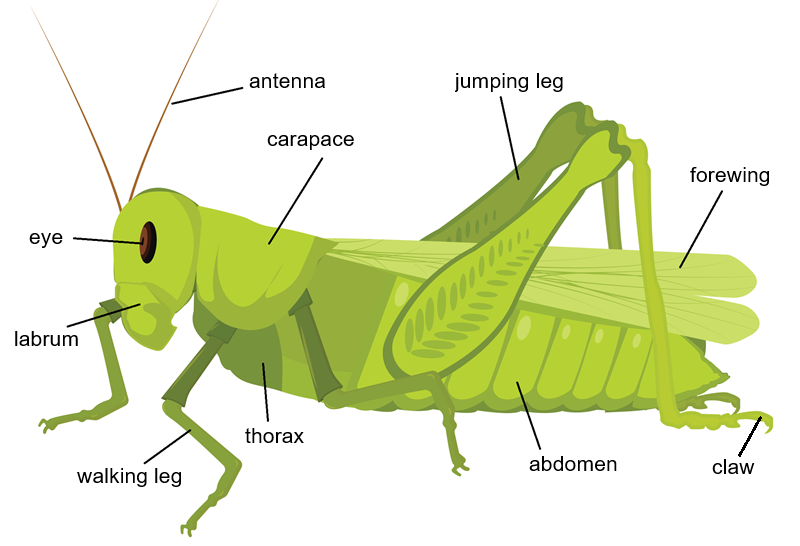
This worksheet provides steps for identifying structures of the grasshopper, with a focus on the external anatomy and mouthparts. Invertebrates are usually part of a unit on classification or within a broader unit on anatomy and physiology.
Grasshoppers are generally cheap to order from biological supply companies or Amazon. They can be stored in alcohol or other preservatives. They have a long shelf life!
In this activity, students start with pre-lab questions about taxonomy and general characteristics of insects. While students complete this section, you can pass out the equipment and tools needed for the investigation. All you really need is a dissecting pan (or similar) and tweezers.
Students will not be focusing on the internal anatomy. You can have students open the body cavity just to satisfy their curiosity, but that is not the focus here. Unfortunately, internal structures of insects can be hard to discern.
 Observation of External Structures
Observation of External Structures
Students will start by identify body segments (head, thorax, and abdomen). They will count the number of appendages (wings and legs). They will also compare jumping legs to walking legs and count the number of joints. Recall, that the name “arthropod” translates to “joint foot.”
Students will locate the eyes and antennae. They will use tweezers to remove parts of the mouth, such as the labrum, and maxilla. They will observe how the mandible opens and closes.
The last section of the activity includes a drawing of the grasshopper for students to label and color.
Grade Level: 7-10 | Time Required: 45 min
HS-LS1-2 Develop and use a model to illustrate the hierarchical organization of interacting systems that provide specific functions within multicellular organisms.


